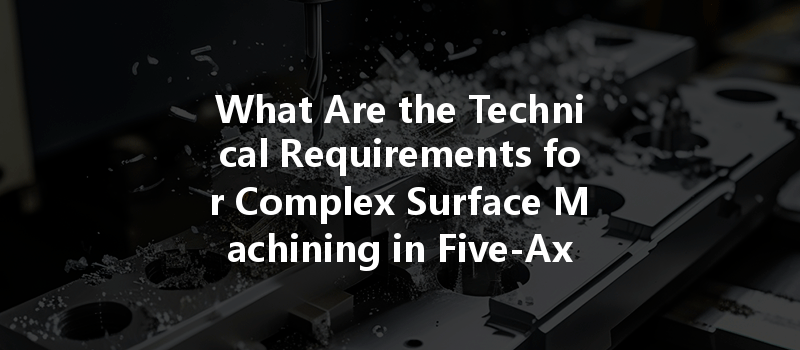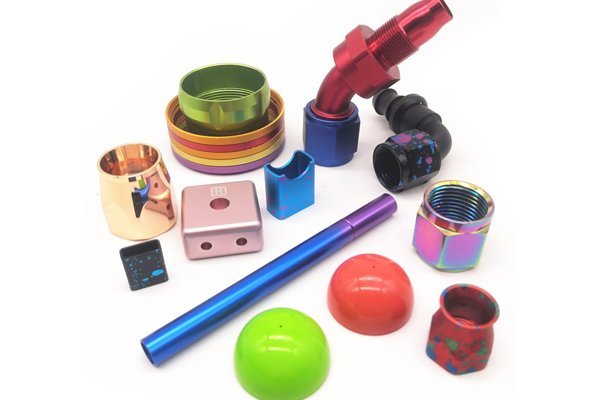Did you know that five-axis CNC machining can reduce production time by up to 75% compared to traditional machining methods? This remarkable efficiency is one of the reasons why industries are increasingly adopting five-axis machining for complex surface machining tasks. As technology advances, the demand for precision and complexity in manufacturing processes has skyrocketed, making it essential for engineers and manufacturers to understand the technical requirements for successful five-axis machining.
In this blog, we will delve into the intricacies of complex surface machining in five-axis CNC machining. We will explore the technical requirements, challenges, and solutions that can help manufacturers achieve optimal results. Whether you are a seasoned machinist or a newcomer to the field, this comprehensive guide will provide valuable insights into the world of five-axis machining.
Understanding Five-Axis CNC Machining
What is Five-Axis Machining?
Five-axis machining refers to the ability of a CNC machine to move a tool or workpiece in five different axes simultaneously. This capability allows for the creation of complex geometries and intricate designs that would be impossible to achieve with traditional three-axis machining. The five axes typically include:
Advantages of Five-Axis Machining
Technical Requirements for Complex Surface Machining
To achieve high-quality results in five-axis machining, it is crucial to select the right machine tool. Key specifications to consider include:
The choice of tooling is critical in five-axis machining. Factors to consider include:
Proper workpiece setup is essential for achieving accuracy in five-axis machining. Key aspects include:
Computer-Aided Manufacturing (CAM) software plays a vital role in five-axis machining. It is responsible for generating the toolpaths that guide the machine. Important features to look for in CAM software include:

Setting the correct machining parameters is essential for achieving optimal results. Key parameters include:
Different materials present unique challenges in five-axis machining. Understanding the properties of the material being machined is crucial for selecting the right tools and parameters. Common materials include:
Challenges in Complex Surface Machining
Tool wear is a common issue in CNC machining, especially when working with hard materials. Regular monitoring and replacement of tools are essential to maintain machining quality.
Vibration can lead to poor surface finishes and dimensional inaccuracies. Strategies to mitigate vibration include using dampening fixtures and optimizing cutting parameters.
Creating toolpaths for complex geometries can be challenging. Advanced CAM software can help simplify this process, but operators must still have a strong understanding of machining principles.
Five-axis machining can be more expensive than traditional methods due to the higher costs of machinery and tooling. However, the long-term benefits often outweigh the initial investment.
Solutions for Successful Complex Surface Machining
Investing in high-quality CNC machines and tooling can significantly improve machining outcomes. Look for machines with advanced features such as adaptive control and real-time monitoring.
Operators should receive ongoing training to stay updated on the latest machining techniques and technologies. This can lead to improved efficiency and reduced errors.
Regular quality checks throughout the machining process can help identify issues early and prevent costly rework. Techniques such as in-process measurement can be beneficial.
Working with experienced machinists and engineers can provide valuable insights and solutions to complex machining challenges.
In conclusion, complex surface machining in five-axis CNC machining presents both challenges and opportunities for manufacturers. By understanding the technical requirements and implementing best practices, companies can achieve high-quality results and improve their competitive edge in the market.
As industries continue to evolve, the importance of mastering five-axis machining cannot be overstated. It is a critical skill that can lead to increased efficiency, reduced production times, and the ability to create intricate designs that meet the demands of modern manufacturing.
Remember, investing in the right equipment, training, and quality control measures is essential for success in this field. As you reflect on the insights shared in this blog, consider how you can apply these techniques to enhance your machining processes and drive innovation in your organization.






